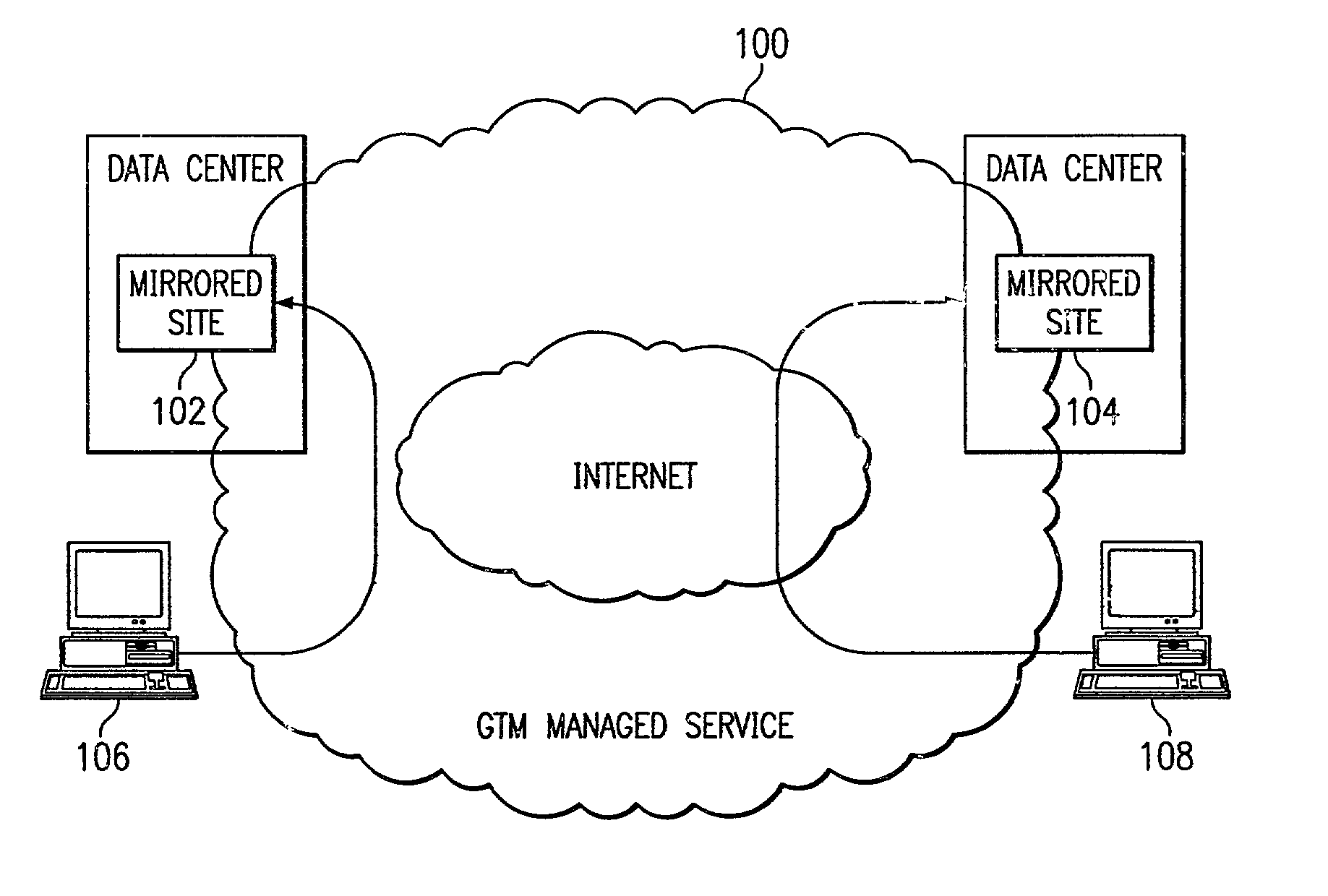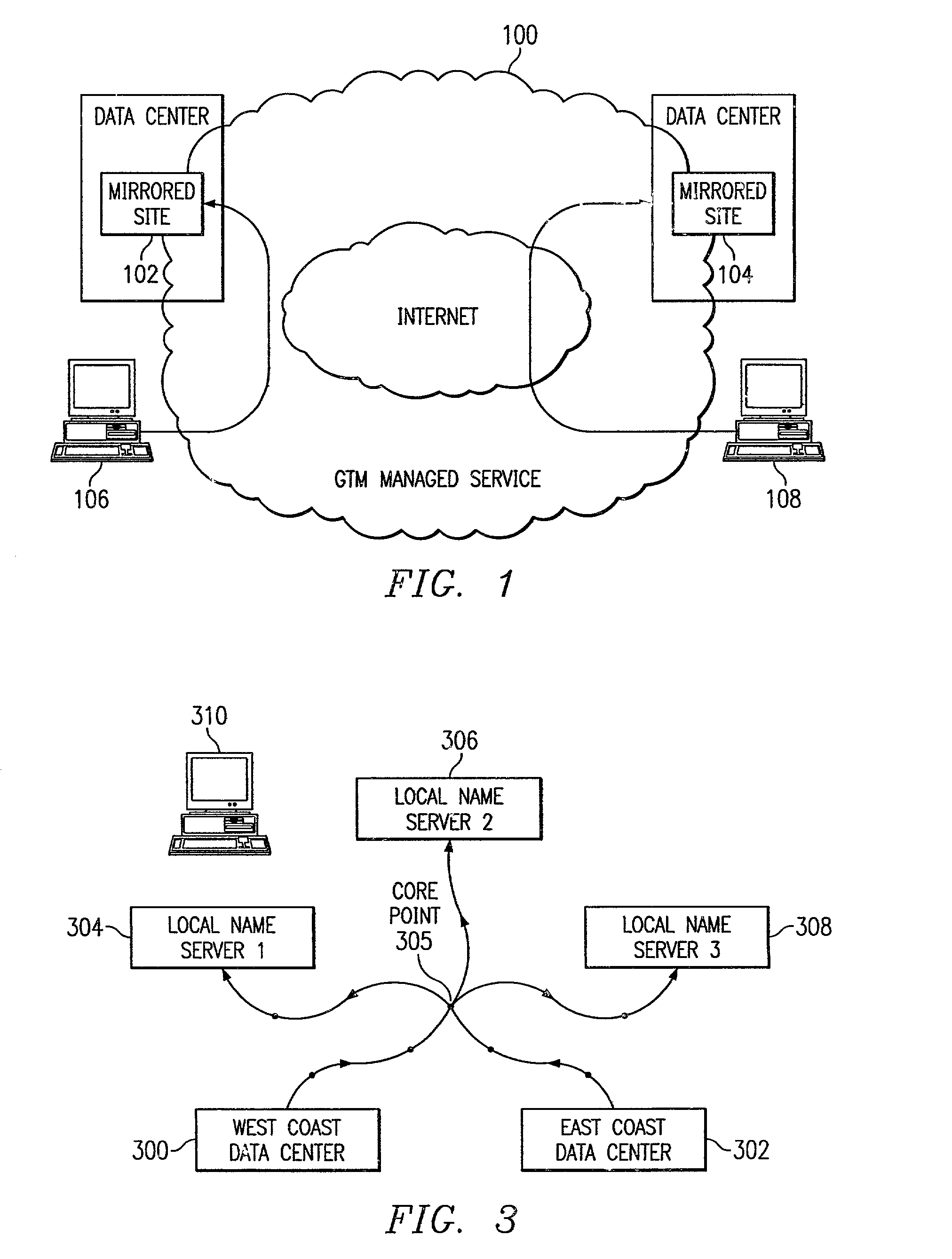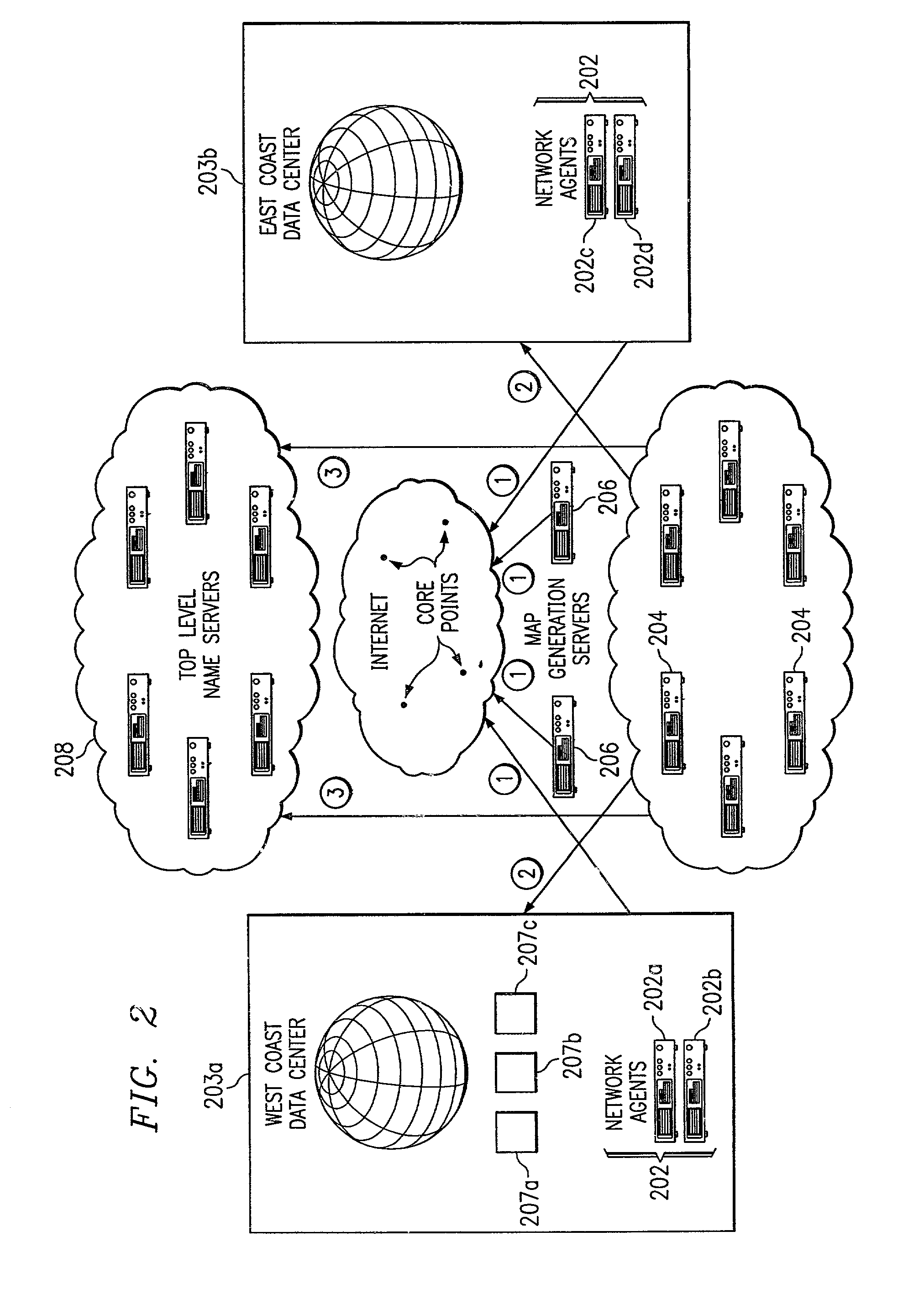Method for extending a network map
- Summary
- Abstract
- Description
- Claims
- Application Information
AI Technical Summary
Benefits of technology
Problems solved by technology
Method used
Image
Examples
Embodiment Construction
[0025]By way of brief background, it is known in the art for a Web content provider to distribute or “mirror” its Web site to ensure that the site is always available and providing acceptable performance for a global customer base. Once a Web site is distributed, global traffic management (GTM) solutions typically are used to direct users to the various mirror sites. GTM solutions use a variety of methods to determine which is the “best” mirrored site in which to direct a user. Because Internet conditions are constantly changing, however, the “best” site for a particular user also varies with these conditions. The present invention is a GTM solution that maximizes availability and performance of a mirrored delivery site.
[0026]In a preferred embodiment now described, the global traffic management solution is a managed service provided by a service provider, such as a content delivery network (CDN) service provider (CDNSP). As is well-known, a CDN is a network of geographically distri...
PUM
 Login to View More
Login to View More Abstract
Description
Claims
Application Information
 Login to View More
Login to View More - R&D
- Intellectual Property
- Life Sciences
- Materials
- Tech Scout
- Unparalleled Data Quality
- Higher Quality Content
- 60% Fewer Hallucinations
Browse by: Latest US Patents, China's latest patents, Technical Efficacy Thesaurus, Application Domain, Technology Topic, Popular Technical Reports.
© 2025 PatSnap. All rights reserved.Legal|Privacy policy|Modern Slavery Act Transparency Statement|Sitemap|About US| Contact US: help@patsnap.com



